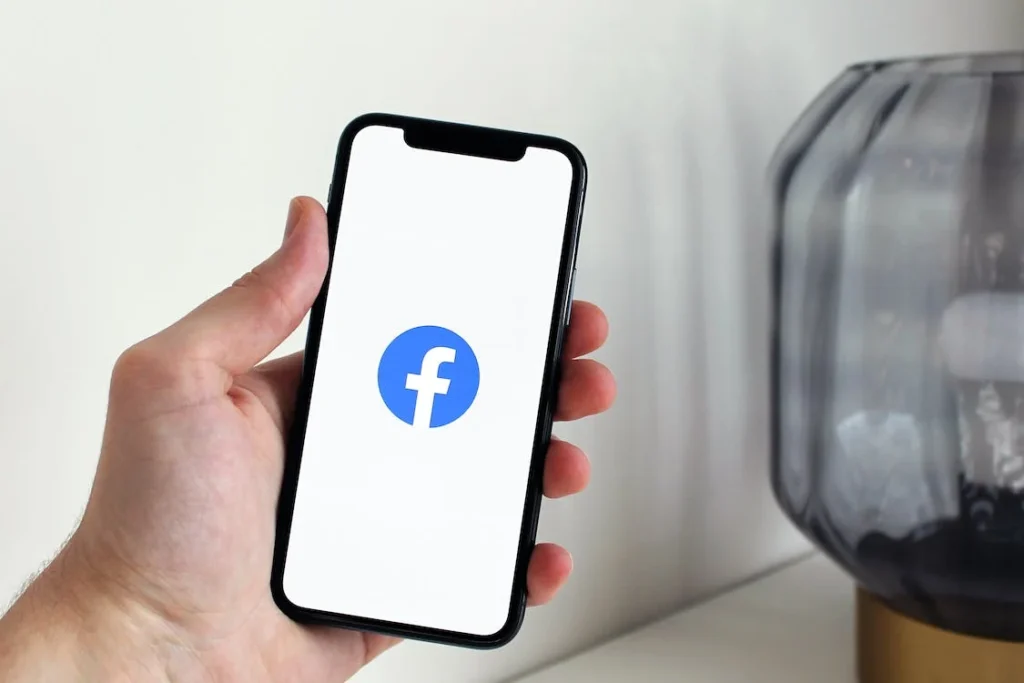In today’s digital landscape, a strong online presence is not a luxury but a necessity. From solo entrepreneurs to multinational corporations, businesses are leveraging search engine optimization (SEO) to drive quality traffic, establish brand authority, and generate leads.
However, while the fundamentals of SEO remain consistent, the strategies for business-to-business (B2B) and business-to-consumer (B2C) sectors vary considerably due to their inherent differences.
This article dives deep into the intricacies of B2B and B2C SEO, illuminating their nuances and offering actionable insights for both.
The B2B and B2C Buyer’s Journey
Understanding the buyer’s journey is fundamental when tailoring an SEO strategy. Both B2B and B2C journeys have unique characteristics, rooted in the nature of their transactions and decision-making processes.
B2B: Longer Sales Cycles, Multiple Decision-Makers
In the B2B realm, purchases are rarely impulsive. They often involve substantial investments and long-term commitments, which necessitates a thorough evaluation. As a result, the B2B buyer’s journey is elongated, sometimes stretching over weeks or even months.
Additionally, these purchases seldom hinge on a single individual’s decision.
Instead, they involve multiple stakeholders – from managers to C-suite executives – each bringing their perspective and concerns to the table.
B2C: Shorter Sales Cycles, Often Impulsive Buying
Contrastingly, B2C purchases are frequently more straightforward. Whether it’s a trendy fashion accessory or a bestselling book, the decision-making process is quicker and often driven by emotion rather than extended analysis.
Here, the challenge for businesses is to capture the consumer’s attention swiftly and provide them with the information or nudge they need to make that purchase.
Case Study: ‘Adobe (B2B) vs. Nike (B2C)’ – Analyzing Varied Purchase Paths
Adobe, a leader in creative software, exemplifies the typical B2B purchase journey. Prospective buyers, often businesses or professionals, approach Adobe when they require solutions like Photoshop or Premiere Pro for their work. T
he buying decision here weighs heavily on features, integrations, and pricing plans. On the other hand, Nike, a global sportswear giant, caters directly to consumers. The decision to buy a Nike product often stems from brand affinity, the appeal of the product, or even an influential endorsement.
The timelines between consideration and purchase are considerably shorter than those in the B2B space.

Keyword Research and Intent
Effective SEO strategy always circles back to keywords. The words and phrases potential clients or customers type into search engines can offer a wealth of insights, guiding the content and strategies businesses should adopt.
B2B: Industry Jargon, Specific Pain Points, Solution-Oriented
B2B keyword strategy leans heavily on industry-specific terminologies. Businesses are on the lookout for solutions to their challenges. Thus, they use precise terms, seeking answers to complex issues.
For instance, a business searching for a cloud storage solution won’t merely type “cloud storage.” They might search for “secure cloud storage for large businesses” or “cloud storage with robust encryption.”
B2C: Broader Terms, Product-Based, Emotion-Driven
In the B2C world, searches are broader. A consumer looking for running shoes isn’t likely to be overly specific in their initial search. They might start with “best running shoes” or “durable running shoes.” Emotional triggers also play a pivotal role.
Phrases like “most stylish sneakers” or “celebrity-endorsed sports shoes” can drive substantial traffic in the B2C space.
Case Study: ‘Salesforce vs. Amazon’ – Dissecting Keyword Strategies
Salesforce, a B2B giant in the CRM space, tailors its content around specific industry needs. Their keyword strategy orbits around terms like “enterprise CRM solutions” or “best CRM for nonprofits.”
Amazon, a B2C behemoth, adopts a broader approach. Their keyword focus ranges from generic terms like “bestselling books” to more emotion-driven ones like “gifts for Mother’s Day.”

Content Strategy: Educate vs. Entertain
While quality content is crucial for both B2B and B2C sectors, the type, tone, and purpose of the content can vary dramatically.
B2B: Webinars, Whitepapers, In-depth Guides, and Thought Leadership
B2B customers seek expertise and assurance. They are about to invest significant resources, and they need to trust the vendor.
Hence, B2B content leans heavily on educating the client. Webinars that delve into product features, whitepapers that discuss industry trends, and comprehensive guides that address specific business challenges are the pillars of B2B content strategy. It’s about establishing authority and building trust.
B2C: Engaging Blog Posts, Videos, Infographics, and User-Generated Content
The B2C audience, on the other hand, is vast and diverse. Here, content is about engagement and connection. A catchy blog post about summer fashion trends, a vibrant infographic on health benefits of seasonal fruits, or a captivating video on DIY home décor tips can drive immense traffic and foster brand loyalty.
Case Study: ‘IBM’s Thought Leadership vs. Coca-Cola’s Storytelling’ – Content that Resonates
IBM’s content strategy, deeply rooted in thought leadership, offers deep dives into AI, quantum computing, and more, catering to their industry-savvy audience. Coca-Cola, synonymous with storytelling, crafts content that resonates on an emotional level, from heartwarming holiday commercials to engaging social media challenges.

On-Page SEO and User Experience
In an age where attention spans are limited, offering a seamless on-page experience is paramount. Both B2B and B2C businesses need to ensure their on-page elements are optimized, but the specifics can vary significantly based on their audience.
B2B: Detailed Product Specs, Case Studies, and Client Testimonials
In the B2B arena, decision-makers are often looking for in-depth information. They need to be convinced of the product’s efficacy, its return on investment, and its credibility in the market.
Detailed product specifications, downloadable resources, case studies illustrating real-world applications, and testimonials from reputable clients can make the difference in a lead converting or bouncing off.
B2C: Product Visuals, Reviews, Easy Checkout Process
B2C consumers want immediacy and assurance. High-quality product visuals, easy-to-navigate product categories, user reviews, and a straightforward, secure checkout process are crucial. Every friction point can lead to cart abandonment or a potential customer moving to a competitor.
Case Study: ‘Dropbox Business vs. eBay’ – Optimizing for the Target Audience
Dropbox Business, a B2B solution, emphasizes its features, integrations, and security. Their site offers whitepapers, client stories, and clear call-to-actions (CTAs) encouraging potential clients to try or buy.
In contrast, eBay, a B2C giant, focuses on user experience. High-resolution images, easy search functionality, customer reviews, and daily deals entice users to make immediate purchases.
 strategies employed by B2B and B2C businesses can differ quite dramatically.” class=”wp-image-11047″/>
strategies employed by B2B and B2C businesses can differ quite dramatically.” class=”wp-image-11047″/>Backlink Building and Outreach
Building a strong backlink profile is akin to establishing your business’s credibility on the internet. High-quality, relevant backlinks not only drive referral traffic but also signal to search engines that your site is reputable. The strategies employed by B2B and B2C businesses can differ quite dramatically.
B2B: Guest Posts on Industry Publications, Partnerships, and Collaborations
In the B2B realm, credibility is everything. One of the most effective ways to establish this is by producing high-quality content for respected industry publications. Guest posting on these platforms allows businesses to position themselves as thought leaders, sharing insights, trends, and solutions to industry-specific challenges. These articles, when linked back to the business’s site, bring in a highly targeted audience, already primed for deeper engagement.
Apart from guest posting, forming strategic partnerships and collaborations can further bolster a B2B company’s backlink profile. Consider co-authored whitepapers, joint webinars, or even collaborative research reports. When both partners share and promote this content, it broadens the reach and pulls in backlinks from multiple industry sources.
B2C: Influencer Partnerships, Media Coverage, Viral Campaigns
In the B2C space, visibility and engagement take the forefront. Collaborating with influencers, especially those that resonate with the brand’s ethos, can be a goldmine for backlinks. As influencers share content or promote products, their audience is introduced to the brand, driving both traffic and backlinks.
Additionally, crafting content or campaigns that have the potential to go viral can create a surge in backlinks. Think of engaging videos, impactful social challenges, or even controversial takes on current events (if on-brand). Media coverage of these campaigns further amplifies the backlink potential.
Case Study: ‘HubSpot’s Industry Collaborations vs. GoPro’s Viral Content’
HubSpot, a titan in the inbound marketing industry, frequently collaborates with industry leaders. By co-creating comprehensive guides, research reports, and tools, they not only extend their reach but also consolidate a backlink profile that’s the envy of many.
On the flip side, GoPro, with its user-generated content approach, capitalizes on the viral nature of its product. Every thrilling video shot on a GoPro, shared by users, and promoted by GoPro, generates massive engagement and a slew of organic backlinks.

Technical SEO and Website Structure
In the digital landscape, the technical foundation of your website is crucial. It determines how search engines crawl and index your site and plays a significant role in user experience.
B2B: Clear Navigation, Resource Hubs, Product/Service Demos
B2B websites often cater to professionals seeking in-depth information, solutions, or tools. Hence, clear navigation is essential. Whether it’s a dropdown menu detailing services or a sidebar with the latest resources, the goal is to guide the visitor seamlessly.
Resource hubs play a critical role, offering whitepapers, case studies, e-books, and more, centralizing valuable content and improving crawl efficiency for search engines. Furthermore, interactive product or service demos can engage users, increasing on-page time, and signaling value to search engines.
B2C: Intuitive UI, Speed Optimization, Mobile Optimization
The B2C audience often seeks instant gratification. A cluttered UI, slow-loading pages, or non-mobile-optimized sites can result in quick bounce rates. Prioritizing site speed, ensuring mobile-friendliness, and crafting an intuitive user journey can significantly boost engagement and conversions.
Case Study: ‘Oracle’s Resource Centers vs. Zara’s Seamless Shopping Experience’
Oracle, a giant in the tech industry, boasts resource centers teeming with invaluable content, from detailed guides to insightful webinars. This not only establishes authority but ensures that professionals find what they’re looking for with ease.
In contrast, Zara, a global fashion behemoth, offers a seamless online shopping experience. From lightning-fast load times to a mobile-optimized interface, they ensure shoppers can view, select, and purchase with zero friction.
Social Media Integration and SEO
In an age where social platforms dominate much of our online time, integrating SEO with social media strategies is indispensable. Each platform offers unique opportunities, and the approach will vary based on whether a company is B2B or B2C.
B2B: LinkedIn Prominence, Informative Content, Webinars, and Live Sessions
For most B2B companies, LinkedIn remains the holy grail. It’s a hub of professionals, decision-makers, and industry influencers. A well-optimized company page, regular posting of insightful articles, and engaging in group discussions can significantly boost visibility.
Moreover, hosting webinars and promoting them on LinkedIn can draw substantial attention. These sessions, usually centered around industry insights, solutions, or showcasing product functionalities, can drive organic traffic back to the main website, complementing the SEO efforts.
Furthermore, B2B companies can leverage LinkedIn’s publishing platform to share thought leadership articles. Not only does this position the company as an industry authority, but it also provides additional avenues for backlinks and traffic.
B2C: Engaging Through Instagram, TikTok, Leveraging UGC
B2C companies thrive on engagement, and platforms like Instagram and TikTok offer just that. From visually appealing product showcases on Instagram to quirky brand-centric challenges on TikTok, the opportunities are vast.
User-generated content (UGC) is another potent tool in the B2C arsenal. Encouraging consumers to share their experiences, create brand-related content, or participate in challenges not only boosts engagement but can also drive organic traffic. When these pieces of UGC get shared, they act as genuine endorsements, often leading to better conversion rates.
Case Study: LinkedIn’s B2B Mastery vs. Nike’s Instagram Engagements
LinkedIn, primarily a professional network, has effectively tapped into the B2B space.
With features like LinkedIn Pulse for articles, the platform has become a hotspot for industry insights, discussions, and networking. The algorithm, favoring informative and engaging content, allows businesses to amplify their reach organically.
Contrastingly, Nike’s prowess on Instagram is unmatched. Through a blend of influencer collaborations, powerful storytelling, and UGC, they’ve crafted an engaged community.
Every post, story, or reel not only showcases their products but also resonates with the emotions and aspirations of their audience. Such a strategy ensures that they remain top-of-mind for their audience, indirectly boosting their SEO through increased branded searches and website visits.
Wrapping Up
Understanding the nuances between B2B and B2C SEO is crucial for businesses looking to carve a niche in their respective markets. While the overarching principles of SEO remain consistent across the board, the strategies and tactics differ based on the buying behavior, content preferences, and decision-making processes of the target audience.
For B2B businesses, the emphasis should be on building credibility, showcasing expertise, and nurturing leads through long sales cycles. B2C businesses, meanwhile, should aim for immediate engagement, capitalizing on impulsive buying behaviors, and creating memorable brand experiences.
In both cases, integrating social media, refining content strategies, optimizing technical elements, and understanding the buyer’s journey are foundational. By tailoring SEO strategies to the unique demands of either B2B or B2C, businesses can ensure they resonate with their audience, drive relevant traffic, and ultimately achieve their conversion goals.
Read Next:
- The Ultimate Guide to Make Your Website Adsense Ready: Make Money Online
- 45+ Productivity Apps for Entrepreneurs (2023 Edition)
- 7 Influencer Marketing Campaigns to Inspire
- Competitive Analysis: How to Outperform the Competition
- How to use Constant Contact: An Explainer






















Comments are closed.